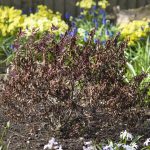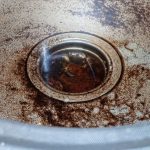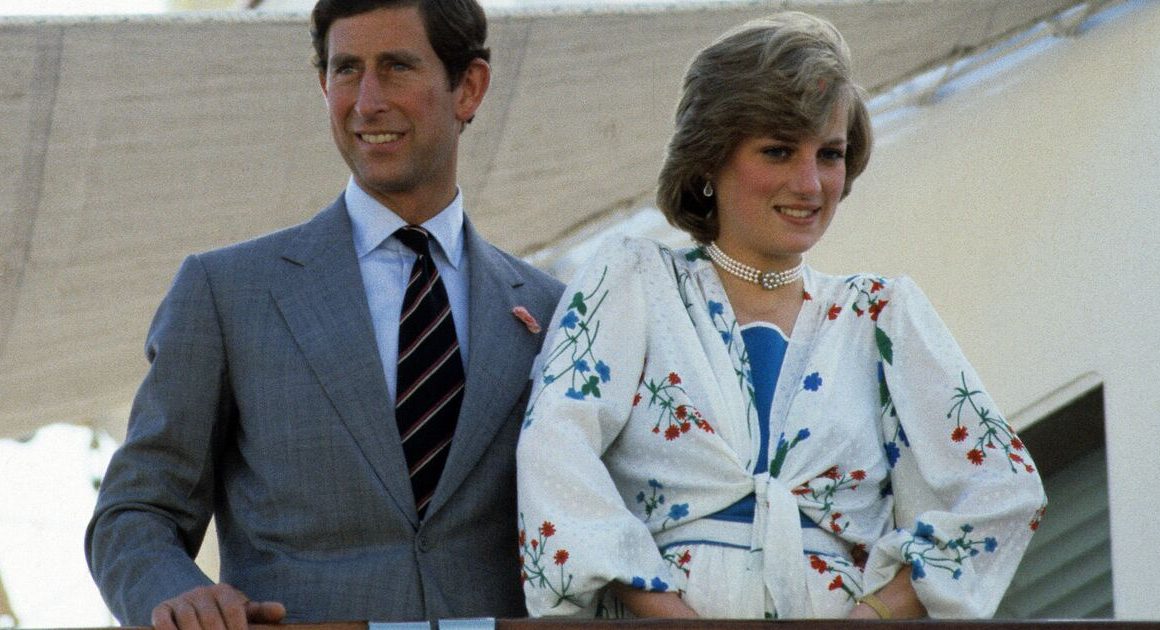Sign up here to get this newsletter in your inbox every Thursday.
This week:
- Climate vulnerable nations say they deserve better credit ratings
- The Big Picture: Green giving and gifting
- The Goosinator robot encourages Canada geese to move on
Bad credit causes problems for countries smashed by climate disasters

Most Canadians know the importance of building a good credit rating. That all-important number, built over years of diligently paying bills on time, decides how much money you can borrow — and therefore the kind of car you can finance, what home you can afford, and even whether you can get a new cellphone contract.
Countries, too, have to build their sovereign credit ratings to borrow money — although the stakes are higher. They use that money to build roads and other infrastructure, and provide government services like education and healthcare.
Small island countries, such as Jamaica and Trinidad and Tobago, urgently need this finance to recover and rebuild from devastating climate disasters — storms, rains, floods — all getting worse because of climate change.
But many low-income countries have a low credit rating, if they have one at all. And they are now proposing changes to the rating system as part of global negotiations next year over finance for adapting to climate change.
Only 13 out of 39 small island developing states have a credit rating, most of them low. Countries like Dominica, St. Lucia, St. Vincent and the Grenadines don’t have ratings at all.
“What we are asking is to come up with a more balanced assessment,” said Ritu Bharadwaj, principal researcher at the International Institute for Sustainable Development, a climate policy think-tank that’s working with small island countries on reforming the financial system.
“Investors would want to know the risk to investment, but they would also want to know the opportunities, the return on that investment.”
Ratings agencies generally consider lower income countries as a higher risk for investment, because they risk defaulting on loans. For small island countries, those ratings suffer further every time a storm hits and sets back the country’s finances and damages their infrastructure.
But Bharadwaj argues that doesn’t take into account the potential of these countries: low-cost manpower, huge natural resources like mangroves, the large opportunity to build renewable power like wind and solar, and social institutions like farmers cooperatives.
“So if we come up with a sovereign credit rating which assesses both risks as well as opportunities of investment and then comes out with a comprehensive assessment of return on investment … it would be a much more holistic assessment,” Bharadwaj said.
Bharadwaj says that’s partly because countries have to pay to get a rating from the agencies, which can be very expensive.
“And even maintaining a credit rating is very expensive because you have to appoint an agency which maintains a credit relationship with those [rating] agencies.”
That’s difficult for small island countries, many of which have tiny finance ministries and may not have the budget or staff to engage with foreign credit rating firms.
Countries with bad ratings cannot borrow as much, and have to pay much higher interest rates. The cycle of loans and climate disasters has locked many small islands into a vicious cycle of debt that keeps them from investing in their economies and building adaptations to climate change.
This is why small island countries are leading a call for a fairer rating system. Currently, just three companies — Standard and Poor’s, Fitch and Moody’s, all U.S. firms — provide almost all of the ratings for countries.
Bharadwaj said proposals on the table include reforming the current system, by getting the ratings agencies to be more transparent about their criteria and take a more balanced approach to rating small island countries.
Another proposal is to create a new credit rating entity, under the UN, that won’t penalize countries that are suffering more frequent climate disasters and will take into account the returns on investment in terms of making a country more resilient to climate change.
These proposals will be taken up at a major UN conference on sustainable development in Spain next summer. Leaders from governments along with large financial institutions will discuss how to increase much-needed investments to developing countries for fighting climate change.
— Inayat Singh

Old issues of What on Earth? are here. The CBC News climate page is here.
Check out our podcast and radio show. In our newest episode: Home renos are super popular. That means more waste from old houses. But what if you could salvage that waste and turn it into something useful? That’s what one woman did and now other homeowners are doing it, too. CBC climate reporter Emily Chung shows us how old homes are now being deconstructed to dodge the dump and reduce emissions.
What On Earth18:16Do we need a ‘Value Village’ for used building materials?
What On Earth drops new podcast episodes every Wednesday and Saturday. You can find them on your favourite podcast app, or on demand at CBC Listen. The radio show airs Sundays at 11 a.m., 11:30 a.m. in Newfoundland and Labrador.
Have a compelling personal story about climate change you want to share with CBC News? Pitch a First Person column here.
Reader feedback
Last week, we shared tips from climate activists about how they stay focused and avoid burnout.
Leah Murray wrote: “I wanted to write and tell you how much it meant to me to be able to see that today: how much it lifted my spirits to know that I’m not alone with either the fight for change or in the sometime inability to just keep on going in spite of everything I think I’m seeing. It was exactly the message I needed to hear today.”
Barbara Herring of Peterborough, Ont., wrote: “I have found the following course very [helpful] in motivating me forward: Resilience and Acceptance in the Face of Collapse. It helped me to give up grandiose plans to ‘save the world’ and focus on what I could do. Lots of suggestions for mental health in the course.”
Write us at whatonearth@cbc.ca. (And feel free to send photos too!) Please keep sharing your suggestions for greener holiday gifting or other ways to make the holidays greener – we will compile them for a future issue.

The Big Picture: Green giving and gifting

We’ve been asking readers how they celebrate the holiday season. Sherry Boschman wrote: “Perhaps you have heard this one before. Our families are buying our gifts from thrift stores, so that no new products need to be manufactured.”
Second-hand gifts for Christmas — or “Thriftmas” — is a trend we’ve written about before, with benefits for both the environment and your pocketbook.
As Sherry mentioned, one place to find such gifts is thrift stores, which often raise money for charities. But if you’re looking for something specific, online resellers or marketplaces tend to be more searchable.
Janelle von Kleist-Bernard of Toronto wrote to us about a third option that combines the two. She founded GiveRise, an online marketplace for second-hand items such as clothing and jewelry, as well as handmade crafts and artwork. It automatically donates a portion of sales to a charity chosen by the vendor. Right now, there are close to 500 items for sale from 59 Canadian vendors donating to 20 registered non-profit organizations.
Von Kleist-Bernard says this is a time of year when people are in the giving spirit. “And they’re also doing shopping anyway, so why not?… It’s two birds, one stone.”
Above is a picture of von Kleist-Bernard with some of the items for sale on the site, including some clothing and a painting by her aunt. She has sold her own charcoal drawings there, and hopes to do that again in the future.
— Emily Chung
Hot and bothered: Provocative ideas from around the web

The Goosinator robot encourages Canada geese to move on
The City of Lethbridge is using a new device to address the growing number of waterfowl — like geese and ducks — causing issues at a lake in the area. The hope is that it changes future migratory patters for the flock.
It’s bright orange with menacingly sharp teeth. As it floats around on the water, its piercing yellow eyes appear to follow its target no matter where it moves. It also has a propeller for a nose.
It’s the Goosinator.
One of the Goosinators — which are remote-controlled devices used to haze geese — can be found hanging out at Henderson Lake Park in Lethbridge, Alta., where the city has taken a creative approach to goose management.
“We have a goose-management plan to try to reduce the number of resident geese that hang out in Lethbridge over the winter,” said Erin McIlwraith, parks operations coordinator with the City of Lethbridge.
“We want to keep these geese healthy and our water quality up, so we try many different techniques to keep them migrating the way that they should.”
Invented by a man named Randy Claussen in the state of Colorado, the Goosinator unit is a two foot-long styrofoam-based device with the goal of mimicking a predator.
When floating around a body of water, it embodies various qualities geese don’t like — its large painted-on teeth, the noise of the propeller and its fluorescent, visually offensive signature orange hue all work together to intimidate the animals.
Nelson Houle is operating Henderson Lake’s Goosinator, and he explained the device is being used to address the growing number of waterfowl — like geese and ducks — causing issues in the area.
“The more you use it, the sooner they recognize it. So repetitive use is key,” Houle told CBC Radio’s The Homestretch.
“As soon as I show up … and as soon as I pull it out of the truck, you can hear them getting nervous. So they’re quick learners, and the colours are very disturbing to them as well.”
Lethbridge’s waterfowl populations have grown significantly over the past few years, according to the city, as many of these birds are choosing to stay in town as opposed to migrating south throughout the wintertime.
“This deviation from their migratory patterns is attributed to unseasonably warm weather as well as human interference,” reads the city’s website.
Some of the issues as a result of the birds staying in the city include more human-goose conflict, feces accumulation and water quality degradation, among other things.
McIlwraith said the idea behind implementing the Goosinator is to have the geese that are crowding one area fly to another place. Because Lethbridge has recently had some warmer winters, resident geese have decided to hang back instead of migrating, she said.
As the lake water slowly freezes and turns to ice, the spots for waterfowl to swim shrink, which McIlwraith said puts the birds at a higher risk of contracting illnesses.
“So the closer proximity that they live, as the ice kind of covers the lake, but little areas stay open, [the birds] get closer and closer. And that can introduce more risk for disease and fungal infections,” she said.
“We want to use the Goosinator to close that water. So if we can get them off those little patches of open water long enough for it to freeze over, then they’ll keep moving on.”
For right now, Henderson Lake is the only Lethbridge area using the Goosinator, as all the city’s other ponds have completely frozen over.
What’s more, animal-lovers need not fear the Goosinator, as it doesn’t physically harm the birds, according to McIlwraith.
“We don’t want to injure or hurt them in any way. We just want to make sure that we’re protecting the people that use the parks, as well as the geese,” said McIlwraith.
As for Houle, he said that controlling the Goosinator is easy to do on water or ice, describing its movement as “gentle.”
“When we talk about hazing the geese, that’s the first thing people think is [that] we’re just racing into them,” Houle said.
“But the movements of the natural predator are more of a slow motion. Trying to let the colours of it and the sound of it chase them away, or deter them from staying.”
Overall, the city says it’s using the Goosinator in a strategic way, making sure it’s only deployed when appropriate, as well as monitoring how the tool impacts the waterfowl population.
Stay in touch!
Thanks for reading. Are there issues you’d like us to cover? Questions you want answered? Do you just want to share a kind word? We’d love to hear from you. Email us at whatonearth@cbc.ca.
Sign up here to get What on Earth? in your inbox every Thursday.
Editors: Emily Chung and Hannah Hoag | Logo design: Sködt McNalty












